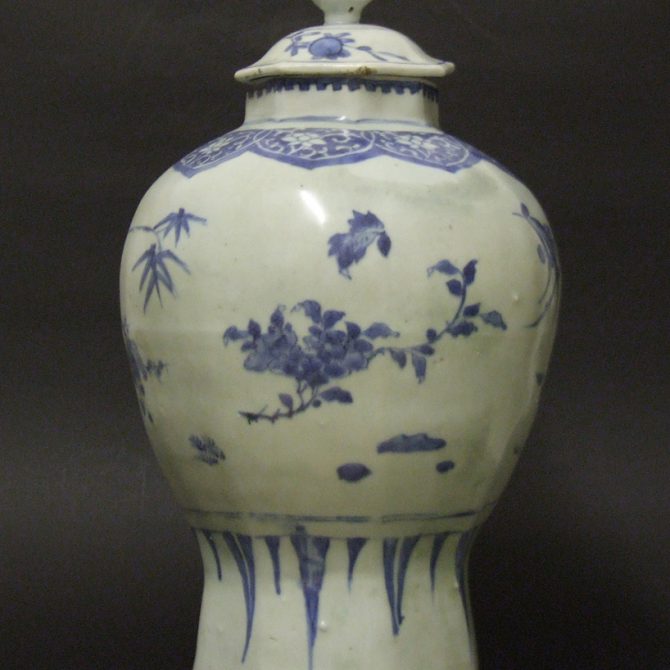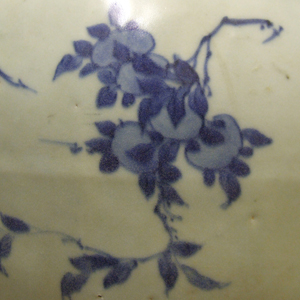
HATCHER CARGO c.1643. Transitional Porcelain.
A Hatcher Cargo Transitional Porcelain Octagonal Baluster Jar. Late Ming or Early Qing c.1643. The Neck Decorated with a Border of `Teeth` and Overlapping Lappets Reserved in Blue with Scrolling Flowers Left in the White. The Central Register is Decorated with `Floating` Flowering Branches, Including Orchids, Plum and Lotus. Below a Band of Stiff Leaves Pointing Downwards.
SOLD
- Condition
- Very good, some wear to the glaze due to immersion in sea-water and some light staining, minor fritting.
- Size
- Height : 36 cm (14 inches).
- Provenance
- N/A
- Stock number
- 21851
Information
Fine And Important Late Ming And Transitional Porcelain, recently recovered from an Asian vessel in the South China Sea. Property of Captain Michael Hatcher. Christie`s Amsterdam 14th March 1984.
Ashdown House, Oxfordshire, built in the 1660`s for William, first Earl of Craven
His father William Craven was born in a poor family in Appletreewick in North Yorkshire but moved to London, became wealthy, and was Lord Mayor of London in 1610. Craven fought for Frederick V on the Continent and fell in love with his wife, Elizabeth of Bohemia. Still being absent during the English Civil War, he supported this lady's brother, Charles I, financially rather than in person and, therefore, had all his lands - largely in Berkshire - confiscated. After the Restoration, he set about planning to build a vast palace for Elizabeth at Hamstead Marshall, but she died before construction began. Legend has it that Ashdown House, Oxfordshire, England, was also built for Elizabeth. After the Restoration he was rewarded with several Court offices and given an earldom. As a Privy Councillor he seems to have been diligent enough: Pepys in his Diary regularly mentions his attendance at the Committee for Tangier and his chairing the Committee on Fisheries. In the latter role Pepys was rather shocked by his bawdy language which Pepys thought improper in a councillor ( though perhaps natural in an old soldier). In 1678 we read of his presence at the historic Council meeting where Titus Oates first publicised, the Popish Plot Pepys' attitude to Craven varies in the Diary- on the one hand he calls him a coxcomb and criticises his chairing of the Fisheries Committee; at other times he is glad that Craven is his " very good friend". Whatever Pepys's opinion of him, Craven earned the lasting respect and gratitude of the people of London during the Great Plague when unlike the great majority of noblemen who fled to the country, he remained in London helping to maintain order and donating property for burial grounds.

